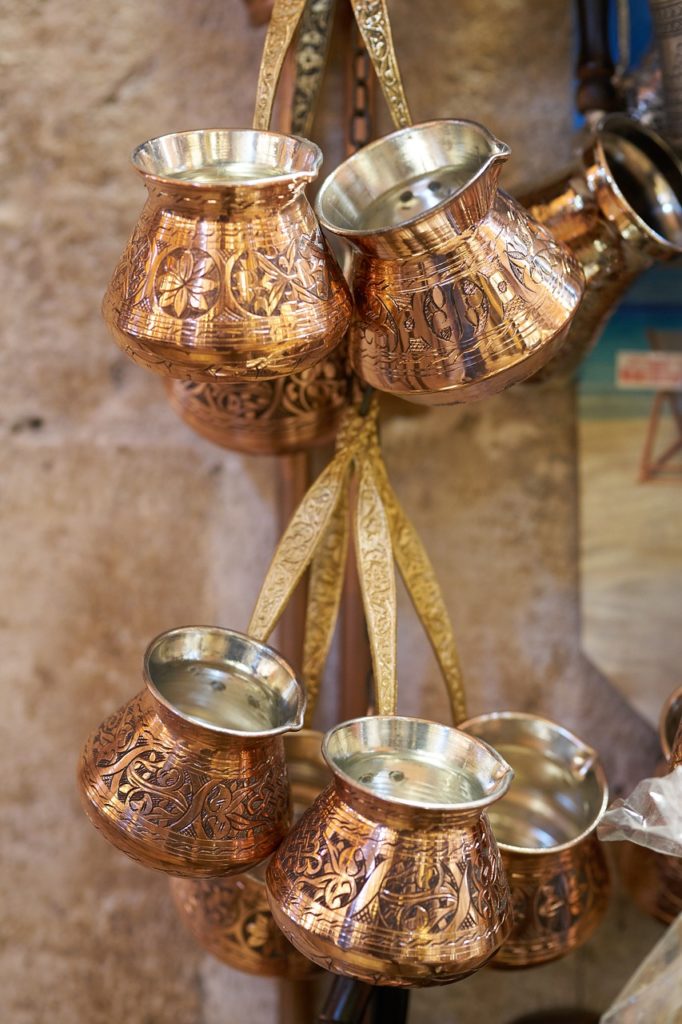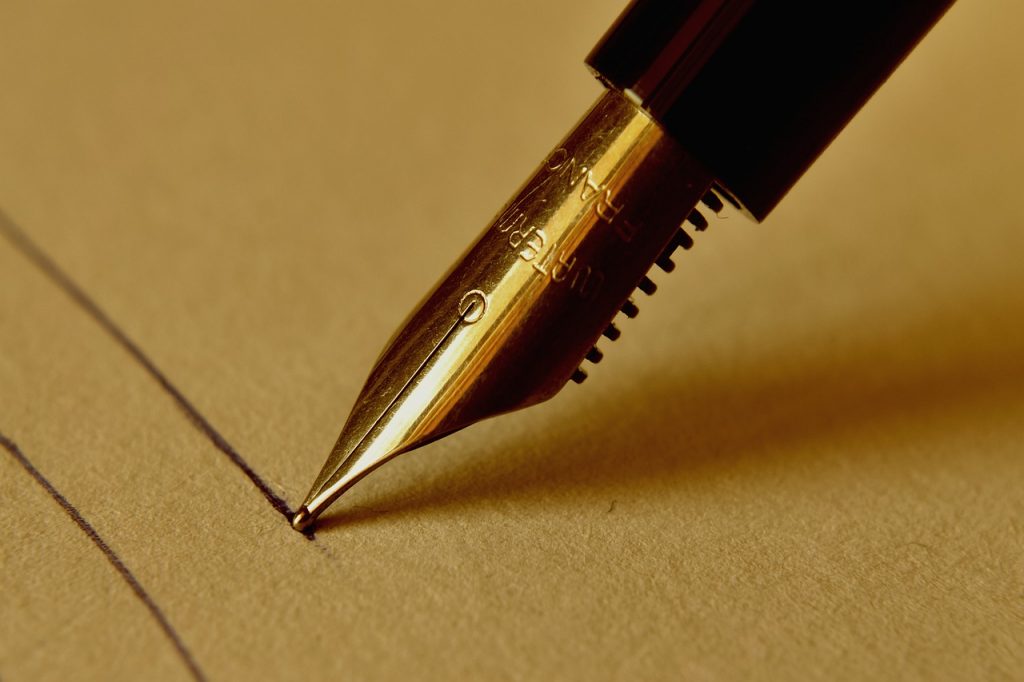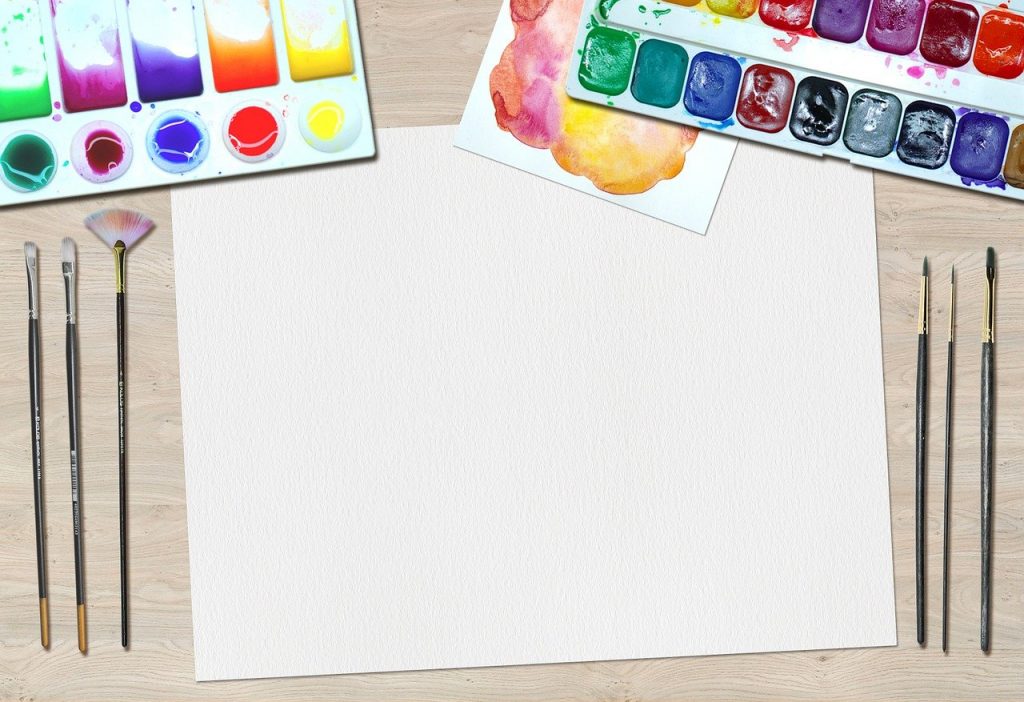Copper craft has been a part of Kashmir’s culture since a very long time. Locally known as kandkari, Kashmiri copperware is one the handicrafts that Kashmir is world-famous for and Kashmiri craftsmen are known across the globe for their art of engraving and creating various copper articles which range from copper utensils to decorative pieces and many more. It is believed that copperware was introduced and popularized in Kashmir by the Islamic scholar and Sufi saint Mir Syed Hamdani. He came to Kashmir from Central Asia and brought craftsmen from there (mainly Persia) to Kashmir. They trained the Kashmiris in the art of creating copperware. The copper art is said to have flourished in Kashmir during the rule of king Zain-ul-Abidin.
Creating copperware is quite a labour-intensive and time-consuming work. It requires Naqash (the engraver), Zarcod (the glider), Roshangar (the polisher) and Charakgar (the cleaner). Draz (hammer), Mekh (stakes), Yandrewah (anvil), and chisels are some of the instruments required in the process. The downtown area of Srinagar has some of the best marketplaces to buy copperware and visitors around the world flock to these local shops to purchase exquisite copper articles from Kashmir. Here we give you a list of the traditional copper utensils (enlisted in alphabetical order), which are among the oldest examples of Kashmiri copper crafts.
Names of Traditional Kashmiri Utensils and Their Uses
Batti Toor: This is a deep round-shaped copper utensil which is used to eat rice.
Bushkab: This utensil is a copper bowl used by Kashmiri men to have food.
Chamche: These are copper spoons.
Dechewaer: It is a slightly taller bowl-shaped utensil which is used to cool dishes.
Deg: These are pot-like utensils used to cook wazwan.
Doonga: It is bowl with a base and a lid with ear-like grips at the sides. It is used for serving food.
Isband Soz: It is an incense burner commonly found in Kashmiri households, used to ward off evil. It is a tradition for a Kashmiri bride to carry the Isband soz with her as a guard against bad glances.
Kaenz: It is a traditional bowl which Kashmiri women use for having meals.
Majma: This traditional copper utensil of Kashmir is used as a serving tray.
Samovar: This traditional Kashmiri utensil is a kettle which is used to brew, boil and serve Kashmiri tea and kahwa. These utensils are engraved or embossed with calligraphic motifs.
Tash Naer: This refers to a set of two utensils which form a portable handwash. This pair has a jug or kettle-like utensil from which water is poured, and a tray-like utensil in which water is poured for washing the hands. During wedding ceremonies, the Tash Naer is taken around for guests to wash their hands after the meal.
Toor Pyala: It is of the shape of a bowl and has a base. This traditional copper utensil is used for serving small dishes.
Trami Sarposh: Wazwan, the famous meal of Kashmiris is served in this traditional copper utensil. The trami is a round-shaped dish from which four people can eat by sitting around it, while sarposh is the conical dish that is placed on the trami before the feast begins.
The copper crafts in Kashmir have evolved from traditional copper utensils like these to jugs, glasses, trays and scoops that have modern shapes and designs. With the advent of advanced technology, many processes in creating copperware were mechanized and this threatened the handcrafting of copper articles. The use of traditional copper utensils in households and even during weddings and other celebrations was taken over by the easier-to-use and more economical glass and chinaware. However, art lovers and collectors still prefer traditional copperware, and hand-crafted copper articles are still used in some households of Kashmir.



